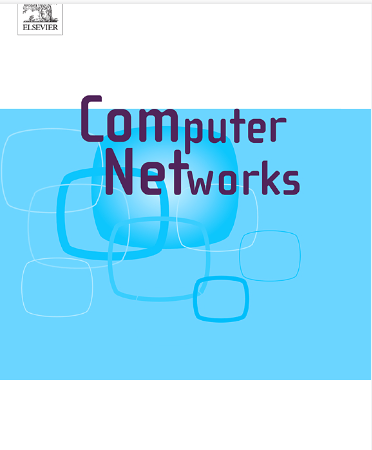Accelerating traffic engineering optimization for segment routing: A recommendation perspective
IF 4.4
2区 计算机科学
Q1 COMPUTER SCIENCE, HARDWARE & ARCHITECTURE
引用次数: 0
Abstract
Traffic engineering (TE) is important for improving network performance. Recently, segment routing (SR) has gained increasing attention in the TE field. Many segment routing traffic engineering (SR-TE) methods compute optimal routing policies by solving linear programming (LP) problems, which suffer from high computation time. Therefore, various methods have been proposed for accelerating TE optimization. However, prior methods solve individual TE optimization problems from scratch, overlooking valuable information from existing historical solutions. We argue that these data can imply the distribution of optimal solutions for solving future TE problems. In this paper, we provide a new perspective on accelerating SR-TE optimization. First, we generated and analyzed historical solutions of a widely used LP model, and revealed two key findings from the data: Flows are predominantly routed through a small subset of intermediate nodes; similar decisions can be made for some flows. Then, inspired by the findings, we propose RS4SR, the first framework to our knowledge leveraging historical solutions for SR-TE acceleration. It can significantly reduce the size of LP model by performing candidate recommendation and flow clustering. Experiments on real-world topologies and various traffic matrices demonstrate that a simple implementation of RS4SR is sufficient to obtain near-optimal solutions within the time limit of two seconds on large-scale networks, utilizing a small number of historical solutions.
加速分段路由的流量工程优化:推荐视角
流量工程(Traffic engineering, TE)是提高网络性能的重要手段。近年来,段路由(SR)在TE领域受到越来越多的关注。许多分段路由流量工程(SR-TE)方法都是通过求解线性规划(LP)问题来计算最优路由策略,这类方法的计算时间较长。因此,人们提出了各种加速TE优化的方法。然而,先前的方法从头开始解决单个TE优化问题,忽略了现有历史解决方案中的有价值信息。我们认为这些数据可以暗示解决未来TE问题的最优解的分布。本文为加速SR-TE优化提供了一个新的视角。首先,我们生成并分析了一个广泛使用的LP模型的历史解,并从数据中揭示了两个关键发现:流量主要通过中间节点的一小部分路由;对于某些流也可以做出类似的决策。然后,受研究结果的启发,我们提出了RS4SR,这是我们利用SR-TE加速历史解决方案的第一个框架。通过候选推荐和流聚类,可以显著减小LP模型的大小。在现实拓扑和各种流量矩阵上的实验表明,RS4SR的简单实现足以在大规模网络上利用少量历史解决方案在两秒的时间限制内获得接近最优的解决方案。
本文章由计算机程序翻译,如有差异,请以英文原文为准。
求助全文
约1分钟内获得全文
求助全文
来源期刊

Computer Networks
工程技术-电信学
CiteScore
10.80
自引率
3.60%
发文量
434
审稿时长
8.6 months
期刊介绍:
Computer Networks is an international, archival journal providing a publication vehicle for complete coverage of all topics of interest to those involved in the computer communications networking area. The audience includes researchers, managers and operators of networks as well as designers and implementors. The Editorial Board will consider any material for publication that is of interest to those groups.
 求助内容:
求助内容: 应助结果提醒方式:
应助结果提醒方式:


